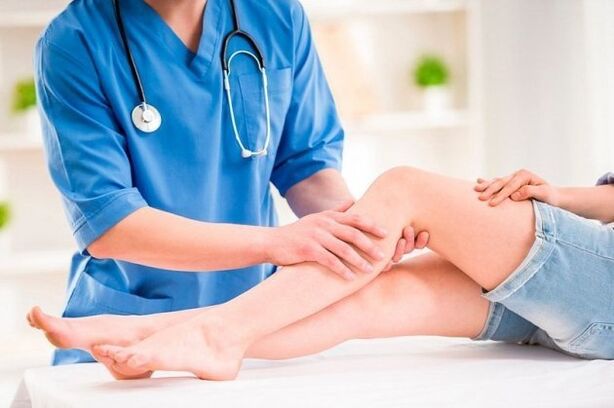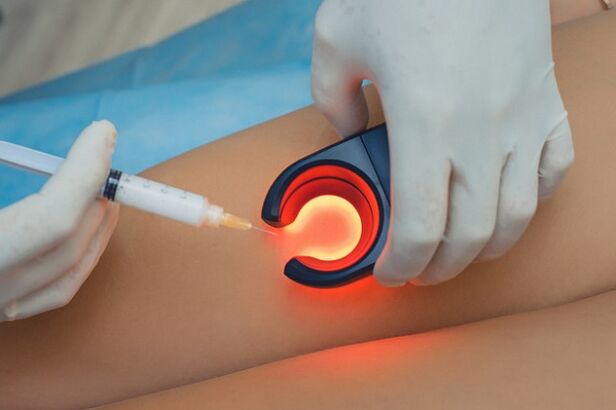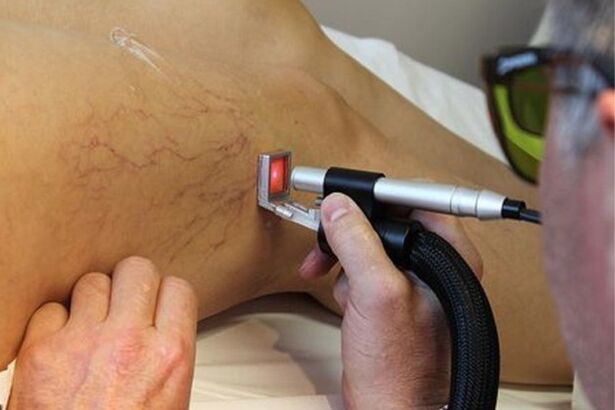Methods of treating varicose veins differ in the intensity of their impact on the pathological problem and their effect on the human body as a whole. Varicose veins are a swelling of the subcutaneous veins with a strong circulatory disorder. The venous plexuses in the affected area become tortuous and acquire a bluish tint.

Compression shirt
Shaping underwear is an integral part of the therapy for varicose veins at any stage. In the early stages of the development of the pathology, compression hosiery can stop the progression of the disease and restore the former beauty of the legs.
There are different types of knitwear:
- knee socks, tights, stockings;
- elastic bandages.
All are classified according to the degree of compression, material of manufacture and manufacturer. Considering that therapeutic underwear must be worn regularly, it is best that the type of compression is chosen by a doctor. Compression stockings and tights can be worn for preventative purposes, especially if there is a greater risk of developing varicose veins.
Medicines
Conservative treatment refers to non-invasive methods of correction. The average course is 2-3 months. During therapy, swelling and inflammation decrease and venous protrusion decreases. It is important to combine local and systemic treatment with the use of compression stockings. Pharmacological correction allows you to remove varicose veins on the hands and feet due to the possibility of a systemic effect on the body.
Pills
Tablets are widely used in complex therapy. In addition to tablets, systemic treatment may include injections and capsules. Effective and known drugs are:
- blood thinners;
- anti-inflammatory;
- phlebotonics.
Local therapy
As local remedies for varicose veins, ointments, liniments and gels are used to apply to the surface of the skin. Local drugs are convenient to use in home therapy. The drugs relieve swelling and burning in the area of venous protrusion, reduce cyanosis and relieve pain.
The following popular drugs are distinguished:
- based on glycosaminoglycans;
- based on natural ingredients (horse chestnut, sweet clover, butcher's broom);
- non-steroidal anti-inflammatory drugs;
- hormonal.
Treatment with leeches
Hirudotherapy (treatment with leeches) in phlebological practice is completely justified. The positive effect of therapy is due to the following positive aspects:
- elimination of tissue swelling;
- blood thinning;
- prevention of thrombosis;
- pain reduction;
- strengthening of the vascular walls.
Carry out venosclerosis therapy

A common method of treating varicose veins, used in the early stages of the disease. The effect of the procedure is noticeable after 1-3 sessions. There are two fundamentally different options for sclerotherapy.
Puncture method
It is an injection treatment of the veins in the affected area. In some situations, patients may be prescribed IVs. The following drugs are used for intravenous administration:
- platelet disaggregants (to thin the blood);
- thrombolytic agents (which dissolve existing blood clots);
- drugs to improve blood microcirculation.
For severe forms of varicose veins, a synthetic analogue of natural prostaglandin E is used1. Not all patients need shots and injections. The suitability of the method is prescribed by the doctor.
Radiofrequency ablation
The method was borrowed from cardiac surgery, where it is still successfully used to improve the heart rhythm in the affected areas of the heart. Radiofrequency ablation literally means evaporation of a substance. The method is based on the use of current with a strength of up to 750 kHz. The current is delivered into the venous lumen by catheterization. Under the influence of the current at a temperature of 120 ºС, the walls of the vessels come together.
Obliteration differs from classical sclerotherapy in that it is not necessary to introduce special adhesives.
Surgical correction
Surgical treatment is a radical method of treating varicose veins if conservative therapy is ineffective and the pathology rapidly progresses to healthy areas of the lower extremities.
The following methods are used for complete restoration of the affected veins:
- Phlebectomy.Surgery to remove damaged veins. Duration – approximately 1. 5 hours, performed under general anesthesia. The recovery period can last up to 3 months. After surgery there is a risk of permanent scarring.
- Electrocoagulation.The method is based on tissue excision by evaporation of moisture under the influence of direct currents. The effectiveness of the method depends on the depth of exposure to high-frequency currents. Coagulation is used in the treatment of blood vessels, warts, hemorrhoidal diseases and papillomas.
- Cryosurgical treatment.It is a widely used treatment method. The treatment is based on the effect of high temperatures on the affected veins. Under the influence of cold, the body begins to defend itself, which is expressed in the activation of regenerative processes in damaged tissues. To obtain the best results, 3-5 sessions will be necessary. It is used for reticular varicose veins (stage I), as well as grade 2 and 3 venous disease.
- Scleroobliteration.A simple and effective procedure that involves puncturing varicose veins. At the site of the lesion, a breakdown of the endothelial layer occurs and fibrous tissue is formed. With proper compression, the walls of damaged and fibrous vessels unite and the vascular lumen is completely closed. The procedure consists of 5-7 cycles, but after treatment the probability of complete disappearance of the affected veins increases significantly.
- Performing endoscopic dissection.The method is one of the types of subfascial ligation. In other words, the affected veins are tied (cut) using endoscopic instruments with a remote surgical approach. No marks or scars remain after the procedure.
- Laser treatment.An effective, highly accurate and safe method of removing affected veins. The entire treatment consists of local heating of the venous walls and their subsequent sclerosis. The advantage of the method is that only one procedure is necessary.

An innovative treatment can be used to treat varicose veins in children with obesity and endocrine disorders.
Traditional methods
There are several recipes used to improve the general trophism of tissues and blood vessels:
- essential oils;
- apple cider vinegar;
- raw potato applications;
- aloe juice for ulcerative formations;
- cabbage leaf;
- apitherapy – treatment with bee products.
You can use drugs to enhance immunity and improve vascular elasticity. Official medicine does not recognize such drugs as therapeutic and effective.
Lifestyle
In the absence of varicose veins, it is necessary to follow a number of recommendations to prevent the disease. If you suffer from varicose veins, changing your lifestyle and following your doctor's advice will reduce the risk of the disease spreading to healthy veins:
- active lifestyle;
- eliminate bad habits;
- recharges while standing for long periods of time;
- wear comfortable shoes (you can alternate heels with wedges several times a day);
- a balanced diet to prevent constipation;
- weight correction with increase in body mass index;
- compliance with the alcohol consumption regime;
- regular exercises to treat varicose veins.
Varicose veins, when they progress and without adequate therapy, can be dangerous due to the risk of blood clots, trophic ulcers and even gangrene. Varicose veins often coexist with diabetes mellitus, so when the first symptoms of the pathology appear, it would be a good idea to visit an endocrinologist and exclude various hormonal disorders.


















